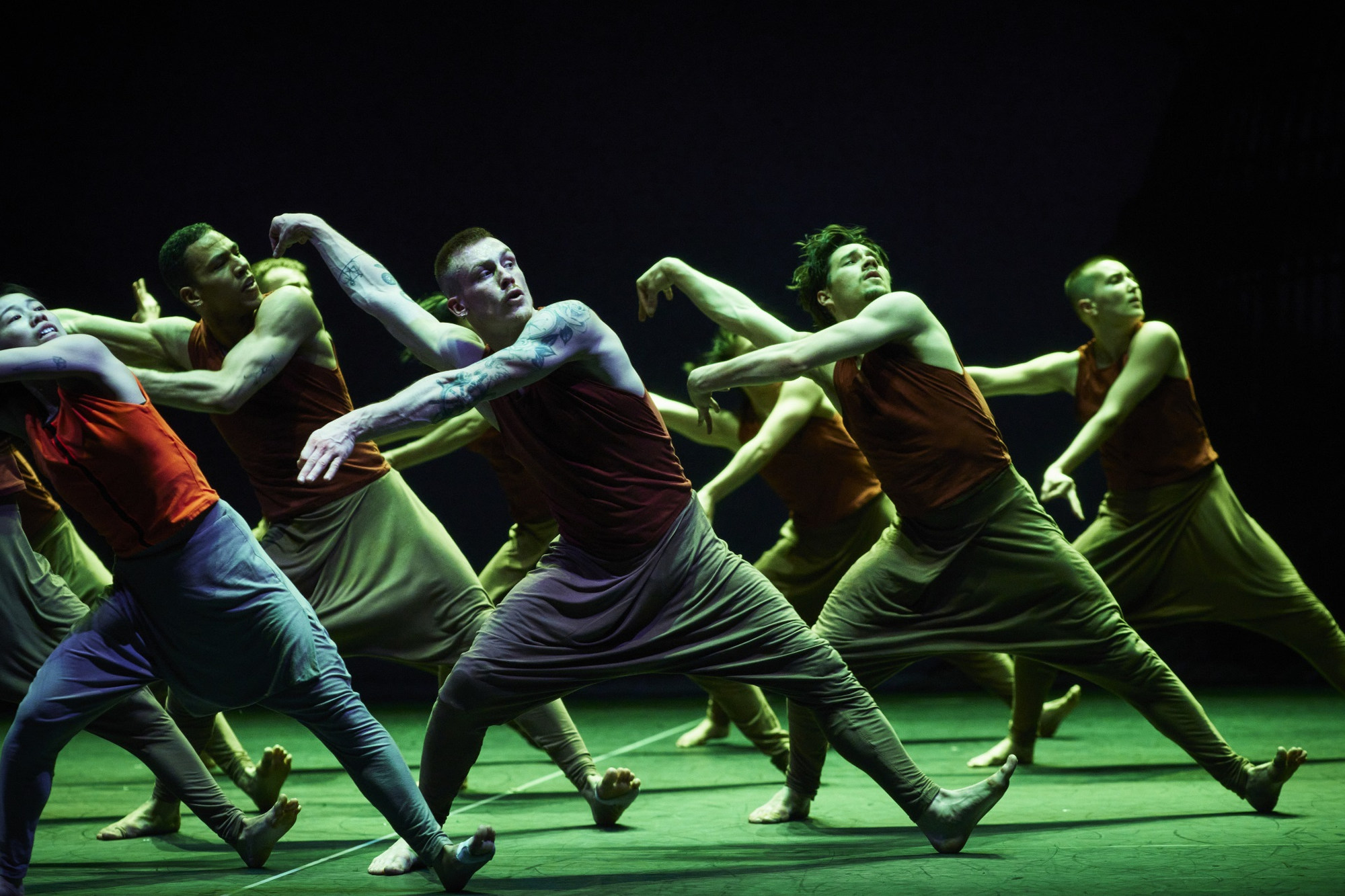
Review | Akram Khan Company’s Jungle Book Reimagined is a brilliant new version of the tale – Mowgli is a girl and fights the effects of climate change
- Mowgli, Bagheera and Kaa are all female in Jungle Book Reimagined, which is full of inventive choreography, striking effects and ingenious use of multimedia
- While the production is long and the political messages heavy-handed, the production is brilliantly imagined – we just wish it was a little more inclusive
The Akram Khan Company made a welcome return to Hong Kong after three years with Jungle Book Reimagined. The work shows the company’s usual strengths: striking theatrical effects, ingenious use of state-of-the-art multimedia and inventive choreography performed by a dazzling ensemble of dancers.
While there are flaws – the production is too long and the political messages are hammered home hard enough to give you a headache – many passages are brilliantly imagined and extremely effective.
Instead of a baby lost in the jungle, Mowgli is a child separated from her family (yes, her – with an overdose of political correctness, not only Mowgli but Bagheera the panther and Kaa the python have become female). She has fallen overboard from a raft while fleeing from the rising waters sweeping away human civilisation, and is saved from drowning by whales.

On reaching land, she is taken in by the animals, despite their distrust of humankind after being victims of exploitation in zoos or laboratories.
Elements of the original stories are woven in, notably Mowgli’s abduction by the monkeys and rescue by Baloo the bear and Bagheera with the help of Kaa, before Mowgli returns to her own kind to save the planet while the animals move on to seek a place of safety as the waters continue to rise.
While most of Kipling’s characters remain, Shere Khan the wicked tiger is omitted – in this universe, the only villain is man and the ending adds an anti-war message to the ecological one.
Worthy though the messages are, they would work better if delivered in a less heavy-handed (and, at times, painfully naive) way and the production is at its best when action takes over from words.

The work is a mixture of dance, theatre and animation, with images projected on special transparent screens at the front and back of the stage, creating effects which are often truly magical.
The score consists largely of dialogue, to which the dancers move as if it was music. This works up to a point, but it feels disjointed to have the performers acting out recorded dialogue with their bodies instead of speaking it, a device which soon palls.
The dominant role of the dialogue also means fluent English is required to follow what is going on, since no surtitles – dialogue projected or displayed on a screen or above a stage – were provided.

Even if Chinese surtitles were not available, English surtitles would help audience members keep up with reams of dialogue spoken in a variety of voices and accents (and indeed give deaf people more access to the show). A puzzling omission, given the production’s aspirations for inclusivity.
The best moments are those when music takes over from dialogue and the dancers can simply dance.

Khan’s choreography does a brilliant job of evoking the various animals through movement and his group numbers are outstanding, notably the Indian dance-inspired sequence when Bagheera relives her past and the stunning ensemble for the monkeys.
From start to finish, the electrifying energy, skill and versatility of all 12 dancers is breathtaking, with Max Revell’s tormented monkey leader and Tom Davis-Dunn’s endearing Baloo absolute stand-outs, bringing their characters to vivid life.
“Akram Khan Company: Jungle Book Reimagined”, New Vision Arts Festival, Hong Kong Cultural Centre Grand Theatre. Reviewed: Nov 12 (Matinee)

